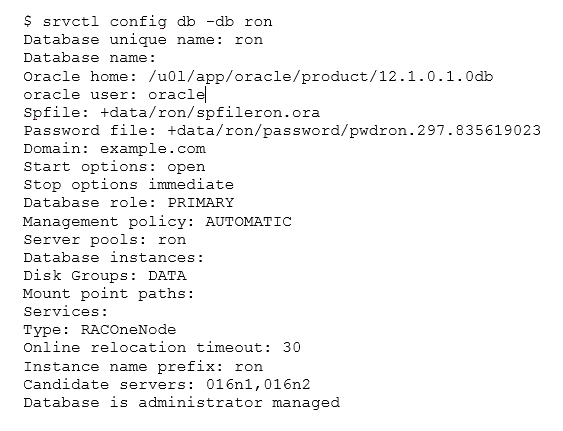At ValidExamDumps, we consistently monitor updates to the Oracle 1Z0-068 exam questions by Oracle. Whenever our team identifies changes in the exam questions,exam objectives, exam focus areas or in exam requirements, We immediately update our exam questions for both PDF and online practice exams. This commitment ensures our customers always have access to the most current and accurate questions. By preparing with these actual questions, our customers can successfully pass the Oracle Database 12c: RAC and Grid Infrastructure Administration exam on their first attempt without needing additional materials or study guides.
Other certification materials providers often include outdated or removed questions by Oracle in their Oracle 1Z0-068 exam. These outdated questions lead to customers failing their Oracle Database 12c: RAC and Grid Infrastructure Administration exam. In contrast, we ensure our questions bank includes only precise and up-to-date questions, guaranteeing their presence in your actual exam. Our main priority is your success in the Oracle 1Z0-068 exam, not profiting from selling obsolete exam questions in PDF or Online Practice Test.
You administer a three-instance, policy-managed, multitenant RAC database CDB1 with three PDBs: PDB_1, PDB_2, and PDB_3.
You want to drop PDB_3.
Which two statements are true? (Choose two.)
Which three statements are true about the Global Enqueue Service and Global Enqueue Service (GES) Resources in Oracle 12c RAC?
Which three statements are true about node listeners in a Grid Infrastructure Cluster using Flex ASM?
Which three file types can be stored in an ASM Cluster file system (ACFS) and used by the relevant software? (Choose three.)
Examine this command and output:

Examine this list of commands:
1. srvct1 convert db -db ron -dbtype rac -node o16n1
2. srvct1 convert db -db ron -dbtype raconenode -node 016n1
3. srvct1 add instance -db ron -instance ron_1 -node 016n1
4. srvct1 add instance -db ron -in5tance ron_2 -node 016n2
5. srvct1 start instance -db ron -instance ron_1
6. srvct1 start instance -db ron -instance ron_2
Currently, there is an instance of database ron running on o16n1.
You want to convert ron to a RAC database and make all instances available.
Identify the commands required, in the correct order, to accomplish this.